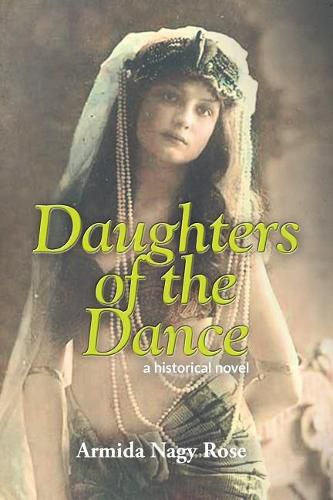Readings Newsletter
Become a Readings Member to make your shopping experience even easier.
Sign in or sign up for free!
You’re not far away from qualifying for FREE standard shipping within Australia
You’ve qualified for FREE standard shipping within Australia
The cart is loading…






This title is printed to order. This book may have been self-published. If so, we cannot guarantee the quality of the content. In the main most books will have gone through the editing process however some may not. We therefore suggest that you be aware of this before ordering this book. If in doubt check either the author or publisher’s details as we are unable to accept any returns unless they are faulty. Please contact us if you have any questions.
Dealing with adult and controversial themes, Daughters of the Dance is a beautiful, moving saga of three generations of strong women immersed in the art of the dance and in their profound relationships with high-powered men driven by oil, wealth, war, trade, religious beliefs, nature, female submissiveness, and sexual boundaries. It is a story of uncharted survival amid three wars in continental Europe during the first half of the twentieth century and its inevitable expansion to the Netherlands Antilles, especially the Sephardic-Ladino community of Curacao, and to the Western Hemisphere. Daughters of the Dance is a metaphor for a method the daughters use to enhance their spiritual being. Ayana, the introductory character, expresses a dominant human condition-the pain of sadness, guilt, and shame-and asks, How do we survive without love? In the words of Rumi, a Persian Sufi, Whosoever knows the power of dance, dwells in the Ineffable Effulgence (i.e., a nonreified Presence), they discover their primordial selves-originated, born, formed, and unfiltered. At a deeper level, the characters encounter lo real maravilloso americano (magic realism) in raw, latent, and ever-present states of being in elegant timelessness. In a way, Rumi pointed the way, What you seek is seeking you. Daughters of the Dance invites the reader to grasp the mystery that lies behind each personality. Words and pictographs fail to fully explain experience. Hence, the novel challenges beliefs so that readers can seek out the experience of beauty and joy amid the perils of unrest that may either fester or heal. To borrow Rumi again, Dance when you are perfectly free and enjoy each step along the way. Happy is the culture that can dance!
$9.00 standard shipping within Australia
FREE standard shipping within Australia for orders over $100.00
Express & International shipping calculated at checkout
This title is printed to order. This book may have been self-published. If so, we cannot guarantee the quality of the content. In the main most books will have gone through the editing process however some may not. We therefore suggest that you be aware of this before ordering this book. If in doubt check either the author or publisher’s details as we are unable to accept any returns unless they are faulty. Please contact us if you have any questions.
Dealing with adult and controversial themes, Daughters of the Dance is a beautiful, moving saga of three generations of strong women immersed in the art of the dance and in their profound relationships with high-powered men driven by oil, wealth, war, trade, religious beliefs, nature, female submissiveness, and sexual boundaries. It is a story of uncharted survival amid three wars in continental Europe during the first half of the twentieth century and its inevitable expansion to the Netherlands Antilles, especially the Sephardic-Ladino community of Curacao, and to the Western Hemisphere. Daughters of the Dance is a metaphor for a method the daughters use to enhance their spiritual being. Ayana, the introductory character, expresses a dominant human condition-the pain of sadness, guilt, and shame-and asks, How do we survive without love? In the words of Rumi, a Persian Sufi, Whosoever knows the power of dance, dwells in the Ineffable Effulgence (i.e., a nonreified Presence), they discover their primordial selves-originated, born, formed, and unfiltered. At a deeper level, the characters encounter lo real maravilloso americano (magic realism) in raw, latent, and ever-present states of being in elegant timelessness. In a way, Rumi pointed the way, What you seek is seeking you. Daughters of the Dance invites the reader to grasp the mystery that lies behind each personality. Words and pictographs fail to fully explain experience. Hence, the novel challenges beliefs so that readers can seek out the experience of beauty and joy amid the perils of unrest that may either fester or heal. To borrow Rumi again, Dance when you are perfectly free and enjoy each step along the way. Happy is the culture that can dance!